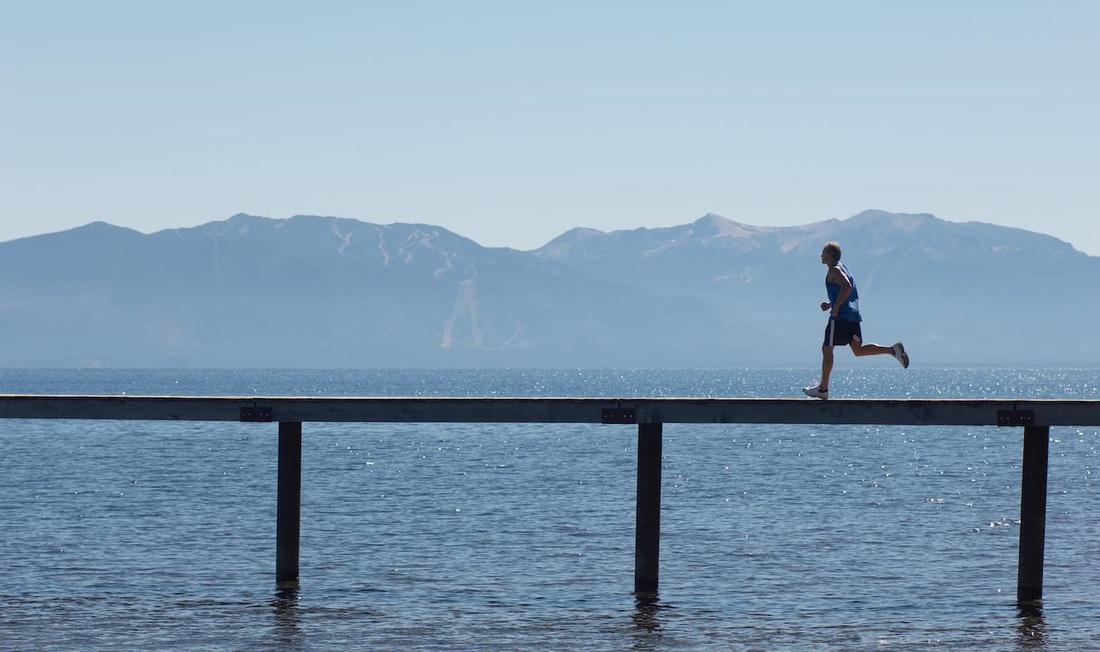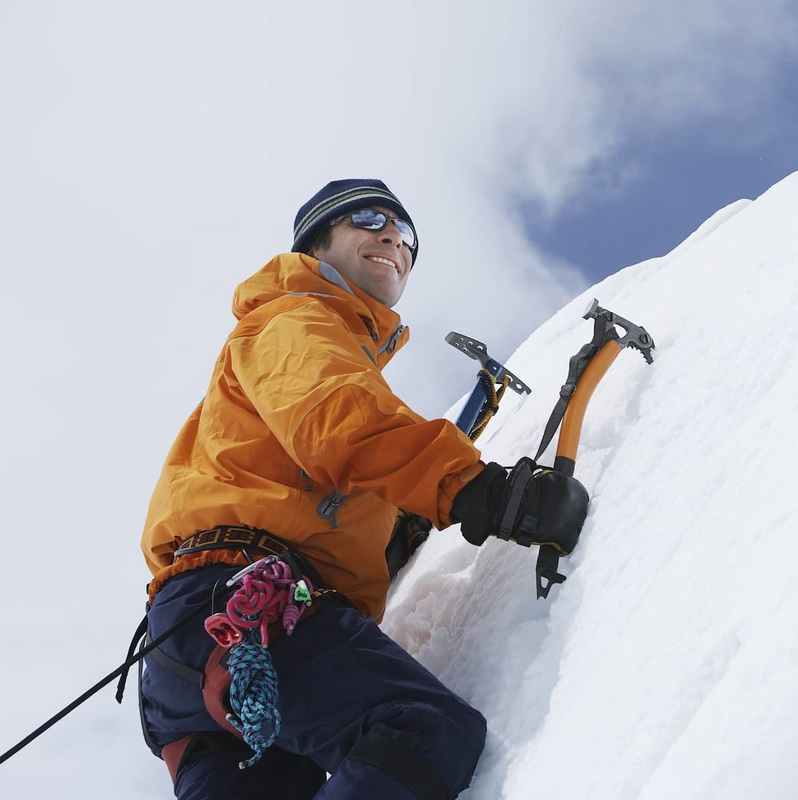|
If you have made it up your first ice climb, you will know that it places some unique demands on your body. A good condition is helpful, but to be climbing hard you need some very specific training. If you feel like continuing your ice climbing career, then you could probably use some tips. Let’s see what you can do. Technique training Climbing is not just about strength and conditioning. In fact, some of the strongest guys are not that good at climbing. You need to apply your strength as well as possible. The first step is to realize the importance of good technique. Once you do, you will start to look at other climbers to see how they solve problems. And you will start to notice the differences between peoples climbing. Start trying out different methods and styles for yourself and see what works best. Make sure you are climbing in a safe environment so you can try out new things without risking certain death. Stamina and general conditioning This area is the first and most boring part of training. If you do a lot of running or cycling, you can probably skip it all together. Otherwise, you need to start doing regular aerobic exercise. Some people prefer running, and some prefer cycling. A third option would be to work out on the cross trainer in the gym. You need to do it at least two times a week and get yourself breathing heavily for 30 minutes. Strength training Ice climbing puts a constant strain on your arms and legs, (mostly calves). If you want to climb more challenging or longer ice climbs you will need to get stronger. The best way to do this is to climb more. It’s that simple:) Climbing more will also give you better technique and make you more relaxed in those conditions. And it’s the most fun But if you can’t go climbing all the time you can do other things as well. Go to the gym - Even though this training is not the most specific it still breeds real strength. The following exercises are surely going to help you: Pull ups - The humble pull-up is still very useful for gaining arm and shoulder strength. You can mix it up by creating contests with your friends or trying variations Hanging leg raises - These are perfect for creating climbing-specific core strength. Squats - Squats give you real hip and core strength. They also work well to counter the hunched over, climbed too much, look. Don’t be afraid to gain “heavy legs,” you need strong legs to climb. And to get to the climb too. Mountain climbers - This strange ground exercise has a very appropriate name. Do it with every session, and you will gain tons of core and arm strength Diet and weight loss Weight has a lot of effect on a climber. Every ounce has to be hauled to the top. And you feel it with every move. Now you don’t need to focus primarily on your weight. Because being strong and healthy is more important than being as light as possible. But you can make a few small changes in your diet. Combine that with the increased training and frequent ice climbing trips, and you will start to get a lot lighter and stronger. Here are some tips:
Mental training Fear can keep you from benefiting from all the work you did. Sometimes people completely freeze on a climb, but it's affecting others as well. It makes you grip harder, move less efficient and stiff. All this means you will burn through you limited resources faster with fewer results. Keeping a cool head when you are not sure you are going to make it is not easy. But it’s often the difference between a mediocre performance and excellent performance. There are many ways to increase your composure in stressful situations. You might already know some or have tried them:
Ok, with this you should have plenty to do to increase your climbing performance. Remember that training is just part of the deal. Too many people get sidetracked into training and end up doing nothing but pull ups or kettle bell swings. Have fun and climb stuff!!
0 Comments
eHave you ever wanted to go ice climbing? It is a sport in which just ten minutes of exertion can have you being cold and hot at the same time. If you are one of those who cannot tolerate cold and be uncomfortable, you may be better of going into hibernation, like a rat. If you are willing to brave the discomfort, ice climbing is a sport that is beautiful and exhilarating. This 'sickle' sport is what we are now talking about in this article. You ned a lot of equipment for this sport. You cannot get away from this. As a skier, you will already know that you have to make a start with clothing. You must always be warm and have a lot of layers on your clothing. It must also be waterproof. Ice is formed from water, and there are many climbs in which water can come cascading down on your ice screws, especially late in the season. Schoeller fabric is not only resistant to water but is a fabric that can breathe, and these properties make it a favorite with many ice climbers. It can, however, be expensive. You must have gators (gaiters) that can protect your trousers and keep the snow out of them when you climb. The other things that you will require besides the right clothing, are Boots, Crampons, Tools, and Gloves. You can always rent out tools, crampons, and boots, but it is better if you buy your own gloves. Never skimp on buying these. The gloves you choose must be reasonably warm, be waterproof and have a leather palm. Schoeller gloves are ideal for ice climbing. The leather in your gloves must be waterproofed by treating with Nickwax or other boot wax on the day before you go climbing, as this can make the leather tacky. Many climbers use a liner glove inside the climbing glove. This can be a great advantage if you need to remove your glove, every time you need to position an ice screw. You may find your palm sweating and it then becomes difficult to put on the glove, while you are hanging onto the axes. Ice Axes - Commercially, there is a whole range of axes available that have flashy names and colors. You must try them out in your local shop. Some of them may even lend you the ax for a day. Tools are another item, you must never skimp on. A tool set that has cost you just $60 may be the one that may have a broken head on the first day itself. Axes also need to be provided with leashes as these are essential and practical when you are just starting ice climbing. Go in for leashes that can be detached from the ax. You must be able to easily unleash your ax when you are in a difficult situation. Crampons - It is easy and more practical to rent the right crampons. You can choose crampons that have two points or those that have just one. Starting with the dual point crampons make for platforms that are more stable when you have to throw your axes. There are some crampons that can switch from one mode to the other, and this is a good solution for the long term. It is a good idea to have crampons that can have their points replaced. Boots - The fit must be right for your climbing shoes. You can get shoes made of leather or plastic, and those that fit different feet from the wide to the narrow. When you are climbing, you may have to kick at the ice, so your shoes must allow for some movement in the toe box so that your toes do not get bashed in during the exercise. Try out for shoes with the socks that you will be wearing during climbing, and this may mean both the liner and the thick sock. Thinsulate socks are ideal. Leather is easier to flex and is more useful for areas that are rocky in their approaches. Plastic can be stiff, but it is possible that some people find this more stable for climbing or kicking. What's Next
Now, you have all the equipment that you need for ice climbing. By now you must have realized, that you also need to be staying close to the place where you will go ice climbing. There are no gyms that can help you to practice for this sport (as yet), so you will have to go out and find a place to go climbing. Your other hobbies will not go anywhere and this sport is definitely more interesting. There is a lot of risk in ice climbing and you can benefit if you take instructions from a professional. It is worth the expense. You will learn a lot about ways to read the ice and the right techniques for climbing, something that you may not pick up even after climbing for a year or two on your own. You can also look for someone who can be your mentor but make sure that the person you choose has years of climbing experience. You may be a good rock climber, but this does not mean that you automatically becoming an expert in ice climbing. Ice is different and your skill as a rock climber does not really count. You now have your axes in hand, all the other gear and are properly tied in. A professional should be holding your rope. What do you think you will hear from him? Do not swing very often, but when you do, swing hard. Aim for the depressions or concavities in the ice and not those areas that are raised or convex. If the entire surface is convex, you may have to swing and remove some ice before you can get your axe to dig in. Every ice ax that sticks should enable you to move both your feet. Your feet must kick with the same precision as your ice ax. The body must be in the shape of a tripod that has your legs spread to the width of your shoulders and the ax should be at the center. Once you have reached the top of the formation that you are climbing, you need to go over the bulge and onto the top, and this is not easy to do. See that your tool is above the bulge and as high as you can put it. Mantle to the top after stepping high. You may feel awkward now, but this is just because you have completed your first climb and joined the club of ice climbing enthusiasts. You may feel exhilarated, but your body may reveal muscles that you never knew you had. The calves can be equally pumped up. |
Author: Jim HMy life used to be pretty uneventful and mediocre. Until I discovered climbing, and in particular ice-climbing. Since then I have been traveling, training and sending as much as I can. It has taken me to places I thought I would never see. |


